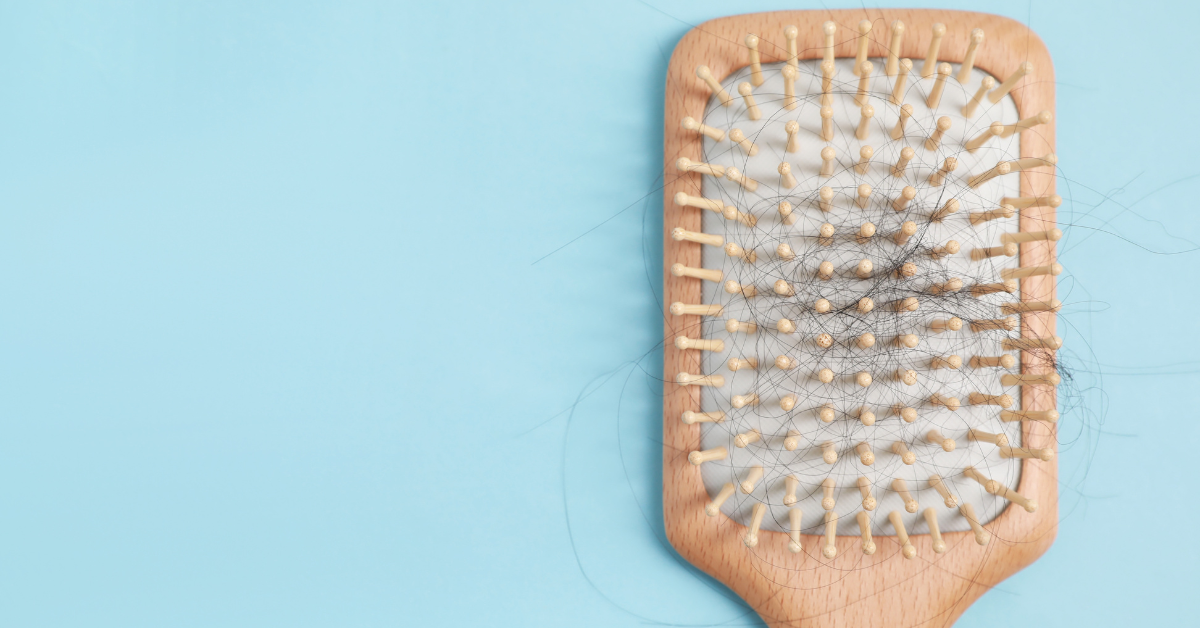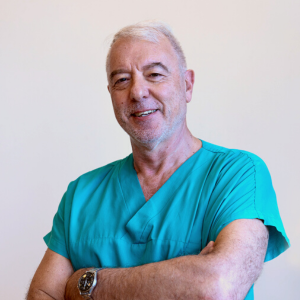Throughout history, hair has played a significant role in our society: it has been associated with youth and beauty in women and with virility and masculinity in men. It is therefore not surprising that hair loss can be experienced as a tragedy and an illness by many men and women.
.png?width=800&height=640&name=Cambio_stagione_perdita_capelli_dermatologia_UniSR%20(2).png)
On the left, the portrait of Empress Elisabeth of Austria (“Sissi”) showing her hair down; Franz Xaver Winterhalter, Kaiserin Elisabeth von Österreich mit aufgelöstem Haar, Kniestück, 1864, Vienna, Kunsthistorisches Museum Wien, Gemäldegalerie, https://www.khm.at/objektdb/detail/8593/. On the right, photograph of the Sioux Indian Chief Tatanka Iyotake (better known as “Sitting Bull”).
Different types of "hair loss"
“Hair loss” can refer to two situations:
- an increased amount of hair falling out on a daily basis (effluvium), an episode that seems to be more frequent in women; in this case it can also simply be a physiological hair turnover, which is calculated to be up to 50-100 hairs per day;
- actual visible hair loss, which is called alopecia; in this situation we may be dealing with primary hair diseases such as androgenetic alopecia (common baldness) or alopecia areata, or alopecia can be a sign of a general disease such as a thyroid disease or an inflammatory disease of the immune system.
There are also many false myths about hair and alopecia that have no scientific basis and should be debunked.
.jpg?width=800&height=534&name=Cambio_stagione_perdita_capelli_dermatologia_UniSR%20(6).jpg)
Possible explanations for seasonal hair loss
Everyone has heard of seasonal hair loss, especially between September and November. In reality, autumn has nothing to do with hair shedding per se.
The exact reason why this happens is unclear, but some studies suggest that the stress caused by the sun and summer heat on the scalp can damage the hair: since hair loss occurs 2-3 months after the damage, after sun taken in July or August the effluvium will manifest itself in October/November.
.jpg?width=800&height=540&name=Cambio_stagione_perdita_capelli_dermatologia_UniSR%20(1).jpg)
There are also other evolutionary hypotheses that our primate ancestors needed to “change fur” before the colder winter months. Hormones and the endocrine system also fluctuate with the changing seasons – with some studies reporting lower thyroid activity which can cause changes in hair growth.
Beyond autumn, another seasonal peak of fall can be observed in spring. In this case, the increase in hair loss would be considered as a preparation for having less "fur" in anticipation of the summer heat. Changes in temperature and humidity can also affect the hair cycle.
In any case, seasonal hair loss is not to be considered a real loss but only an increased physiological hair turnover: not a real pathology but a reversible phenomenon of hair "renewal" that tends to normalize over 1-2 months.
.jpg?width=800&height=304&name=Cambio_stagione_perdita_capelli_dermatologia_UniSR%20(4).jpg)
What remedies for hair loss?
Seasonal hair loss is just a marked change that tends to normalize spontaneously. It is certainly helpful to use non-aggressive shampoos and conditioners and avoid the use of high-temperature styling tools which can cause further damage to the hair. Managing stress that affects hair is also essential, for example, through proper exercise.
Finally, it is common opinion that oral supplements (biotin, vitamin D, iron, zinc...) would promote hair growth. Not only is the scientific validation of these products not fully proven, but in general it is advisable not to take supplements without first consulting a dermatologist.
.jpg?width=800&height=533&name=Cambio_stagione_perdita_capelli_dermatologia_UniSR%20(5).jpg)
When to see a dermatologist?
Given that the dermatologist is the reference specialist who deals with hair from a scientific point of view, it is advisable to have a visit whenever an effluvium of more than 100 hairs is noticed that does not tend to cease or true hair loss appears with empty areas of scalp alopecia. In this case there may be a specific hair disease or the loss may be a sign of a general disorder or illness.
Even a thinning of the hair shaft can be the beginning of baldness, especially if there is a family history. These are all conditions that must be evaluated by the dermatologist, also with the help of new technologies: for example, the Clinical Dermatology of the IRCCS San Raffaele Hospital and Vita-Salute San Raffaele University is equipped with a computerized trichoscope that allows you to probe at high definition hair and scalp.
Currently there are various therapies to stop hair loss and promote hair regrowth, but it is necessary first of all to recognize the cause of the hair loss and make a specific diagnosis, in order to indicate the most appropriate therapy.
.jpg?width=800&height=312&name=Cambio_stagione_perdita_capelli_dermatologia_UniSR%20(3).jpg)
References
- Buontempo MG, Ingrassia JP, Shapiro J, Lo Sicco K. Seasonal trends in hair loss: A big data analysis of Google search patterns and their association with seasonal factors. J Eur Acad Dermatol Venereol. 2023 Jul 20. doi: 10.1111/jdv.19364. Epub ahead of print. PMID: 37471104
- Kunz M, Seifert B, Trüeb RM. Seasonality of hair shedding in healthy women complaining of hair loss. Dermatology. 2009;219(2):105-10. doi: 10.1159/000216832. Epub 2009 Apr 29. PMID: 19407435
- Courtois M, Loussouarn G, Hourseau S, Grollier JF. Periodicity in the growth and shedding of hair. Br J Dermatol. 1996 Jan;134(1):47-54. PMID: 8745886


.png?width=800&height=640&name=Cambio_stagione_perdita_capelli_dermatologia_UniSR%20(2).png)
.jpg?width=800&height=534&name=Cambio_stagione_perdita_capelli_dermatologia_UniSR%20(6).jpg)
.jpg?width=800&height=540&name=Cambio_stagione_perdita_capelli_dermatologia_UniSR%20(1).jpg)
.jpg?width=800&height=304&name=Cambio_stagione_perdita_capelli_dermatologia_UniSR%20(4).jpg)
.jpg?width=800&height=533&name=Cambio_stagione_perdita_capelli_dermatologia_UniSR%20(5).jpg)
.jpg?width=800&height=312&name=Cambio_stagione_perdita_capelli_dermatologia_UniSR%20(3).jpg)